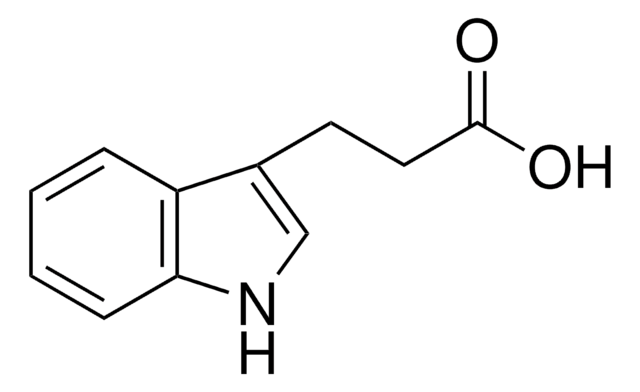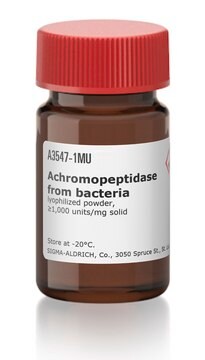L2524
Lyticase from Arthrobacter luteus
lyophilized powder, ≥2,000 units/mg protein, Protein ≥20 % by biuret
Sinónimos:
(1,3)-β-D-Glucan endohydrolase, 1,3-β-Glucan glucohydrolase, Bacterial lyticase, Lysing enzyme
About This Item
Productos recomendados
origen biológico
bacterial (Arthrobacter luteus)
Nivel de calidad
Formulario
lyophilized powder
actividad específica
≥2,000 units/mg protein
composición
Protein, ≥20% biuret
técnicas
cell based assay: suitable
idoneidad
suitable for cell lysis
aplicaciones
diagnostic assay manufacturing
temp. de almacenamiento
−20°C
¿Está buscando productos similares? Visita Guía de comparación de productos
Aplicación
- for spheroplasting the cells
- as a component of digestion solution to incubate yeast cells for digestion of the cell wall
- in the enzymatic hydrolysis of the mycelium precipitate to prepare protoplasts
Acciones bioquímicas o fisiológicas
Definición de unidad
Forma física
Otras notas
Palabra de señalización
Danger
Frases de peligro
Consejos de prudencia
Clasificaciones de peligro
Resp. Sens. 1
Código de clase de almacenamiento
11 - Combustible Solids
Clase de riesgo para el agua (WGK)
WGK 3
Punto de inflamabilidad (°F)
Not applicable
Punto de inflamabilidad (°C)
Not applicable
Equipo de protección personal
Eyeshields, Gloves, type N95 (US)
Elija entre una de las versiones más recientes:
¿Ya tiene este producto?
Encuentre la documentación para los productos que ha comprado recientemente en la Biblioteca de documentos.
Los clientes también vieron
Protocolos
This procedure may be used for the determination of Lyticase activity using Baker’s yeast as the substrate.
Nuestro equipo de científicos tiene experiencia en todas las áreas de investigación: Ciencias de la vida, Ciencia de los materiales, Síntesis química, Cromatografía, Analítica y muchas otras.
Póngase en contacto con el Servicio técnico








